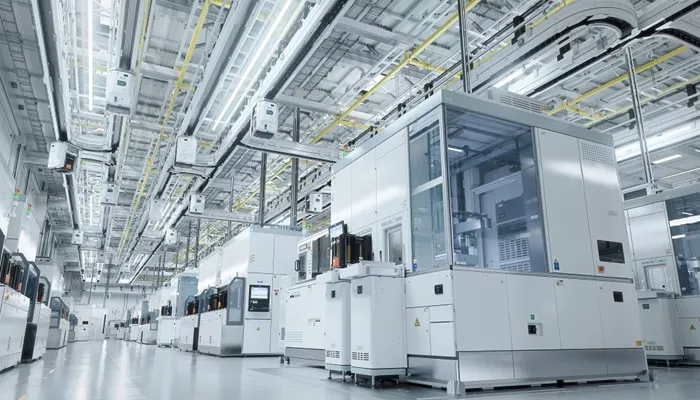A new semiconductor facility, unveiled by Science Minister Lord Vallance at the University of Southampton, promises to boost the UK’s semiconductor capabilities. The facility, which uses advanced electron beam technology, is the first of its kind in Europe and only the second globally, with the original located in Japan. This innovative electron beam lithography facility is designed to create highly precise patterns for semiconductor chips, essential for the development of technologies in sectors like healthcare and defense.
Semiconductors, the small chips powering everything from smartphones to satellites, contribute approximately £10 billion annually to the UK economy. This figure is projected to rise to £17 billion by 2030. The electron beam lithography technology is key to advancing the next generation of these tiny components, which require extreme precision to meet future technological demands.
Lord Vallance emphasized the UK’s strong position in semiconductor research and the importance of the new facility for the country’s growth. “The new electron beam facility in Southampton is a significant step forward in strengthening our semiconductor industry. By investing in infrastructure and talent, we are enabling researchers to develop the next generation of chips in the UK,” he said. “Our £4.75 million skills programme will also support this growth by helping young people enter the sector, addressing the skills gap, and driving innovation.”
Research indicates that a lack of skilled workers is one of the major obstacles to the UK’s expanding semiconductor industry. A semiconductor professional contributes an average of £460,000 annually to the economy, highlighting the sector’s substantial economic potential.
Supporting Talent for Future Growth
In response to this challenge, the UK Government has launched a £4.75 million Semiconductor Skills Programme to cultivate the talent needed to sustain industry growth. This initiative will enhance research and development at leading universities like Southampton, crucial to advancing semiconductor innovation. By fostering collaboration between local universities, industry, and research centers, the programme aims to drive both regional and national economic development.
The program includes several initiatives:
£3 million in undergraduate bursaries: These £5,000 scholarships will support 300 students starting electronic and electrical engineering courses this year, along with professional training in semiconductor design and manufacturing.
£1.2 million in chip design training: This will fund the creation of a new course focused on practical chip design for undergraduates, postgraduates, and faculty, as well as a feasibility study for a postgraduate pathway.
Nearly £550,000 for school outreach: The funding will help expose 7,000 students (ages 15-18) and 450 teachers to semiconductor technologies through practical experience, aiming to raise awareness and diversify the industry’s future workforce.
The program also targets key semiconductor clusters in the UK, such as those in Newport, Cambridge, and Glasgow, working to strengthen these ecosystems and create long-term career opportunities.
Shaping the Future of Semiconductor Innovation
Professor Graham Reid, Director of the Optoelectronics Research Centre (ORC) at the University of Southampton, highlighted the significance of the new facility. “The electron beam facility will help solidify our position as home to the most advanced cleanroom in UK academia,” he said. “It will support a range of cutting-edge research and provide essential training for the next generation of semiconductor professionals.”
By investing in both talent development and technological innovation, the UK is positioning itself as a global leader in the semiconductor sector, driving future growth and economic progress.

